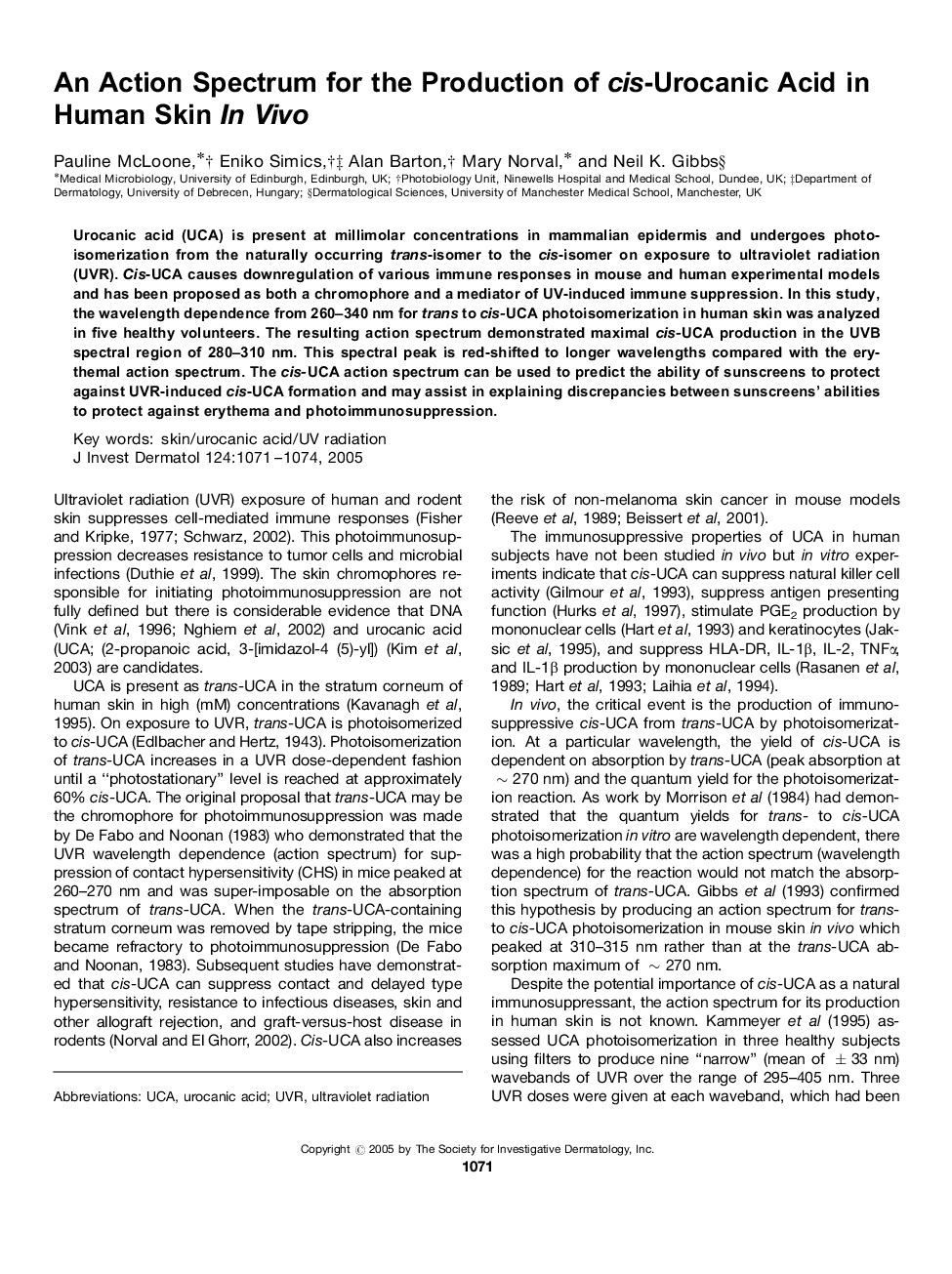| Article ID | Journal | Published Year | Pages | File Type |
|---|---|---|---|---|
| 9231184 | Journal of Investigative Dermatology | 2005 | 4 Pages |
Abstract
Urocanic acid (UCA) is present at millimolar concentrations in mammalian epidermis and undergoes photoisomerization from the naturally occurring trans-isomer to the cis-isomer on exposure to ultraviolet radiation (UVR). Cis-UCA causes downregulation of various immune responses in mouse and human experimental models and has been proposed as both a chromophore and a mediator of UV-induced immune suppression. In this study, the wavelength dependence from 260-340 nm for trans to cis-UCA photoisomerization in human skin was analyzed in five healthy volunteers. The resulting action spectrum demonstrated maximal cis-UCA production in the UVB spectral region of 280-310 nm. This spectral peak is red-shifted to longer wavelengths compared with the erythemal action spectrum. The cis-UCA action spectrum can be used to predict the ability of sunscreens to protect against UVR-induced cis-UCA formation and may assist in explaining discrepancies between sunscreens' abilities to protect against erythema and photoimmunosuppression.
Keywords
Related Topics
Health Sciences
Medicine and Dentistry
Dermatology
Authors
Pauline McLoone, Eniko Simics, Alan Barton, Mary Norval, Neil K. Gibbs,
